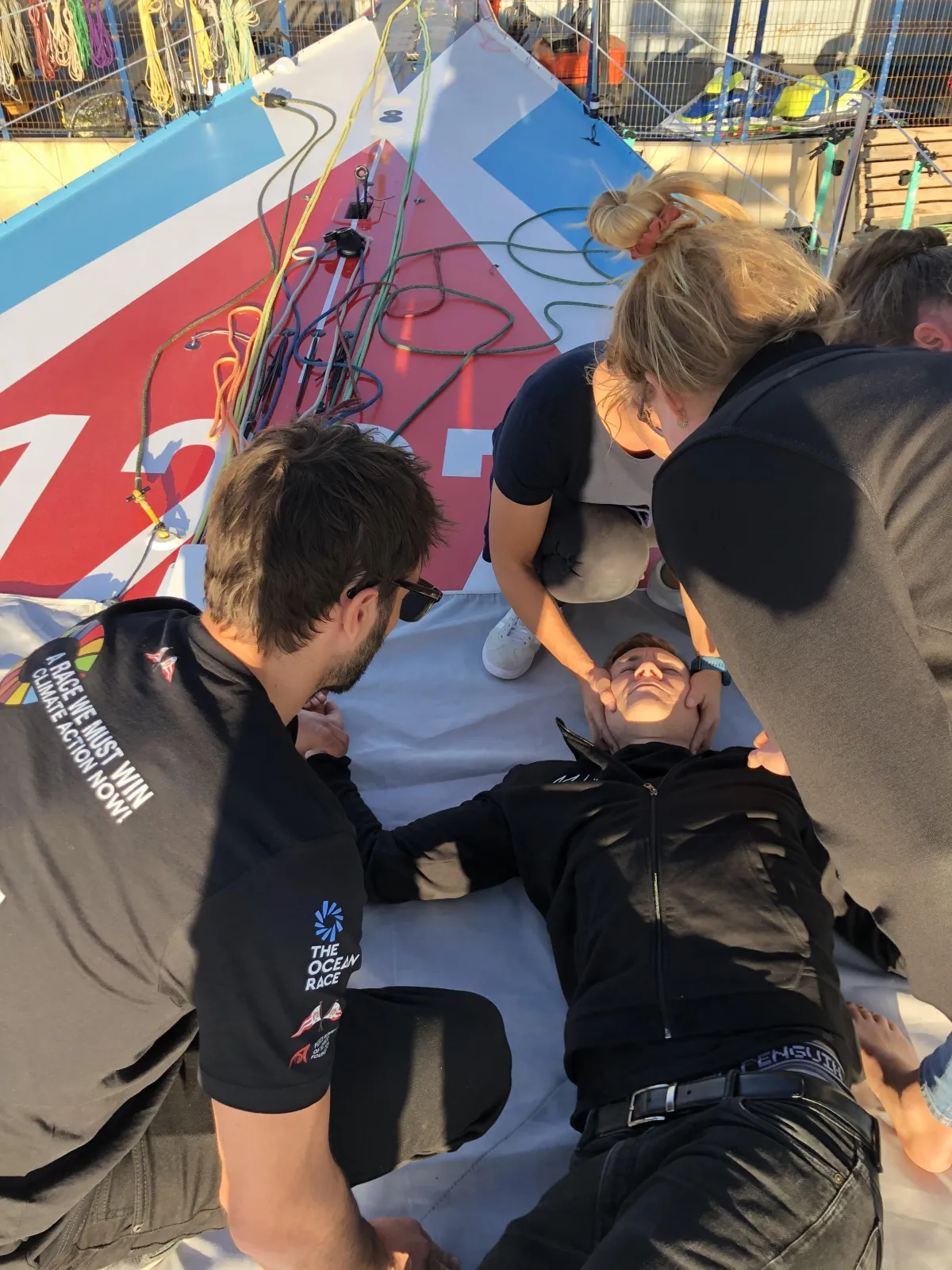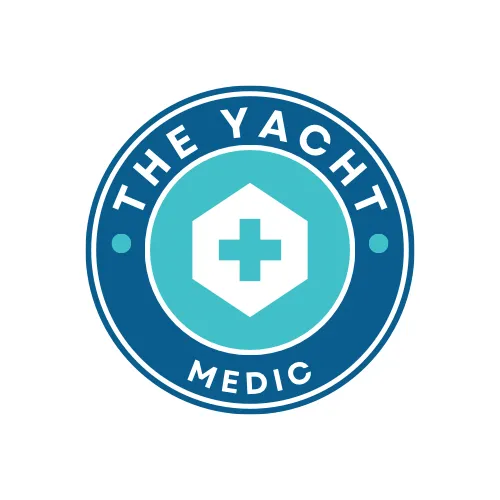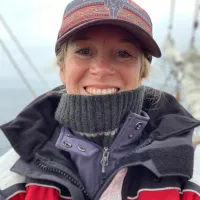See Our Latest Blogs
Beyond Boundaries, Beyond Rescue
Mastering Self Reliance At Sea

DRABC or What?
DRABC vs. MARCH vs. CABC vs. PAWS – Choosing the Right Emergency Response Model for Maritime & Expedition Medicine
Introduction
In a medical emergency at sea, there’s no second-guessing. Whether you're on a superyacht, expedition vessel, or remote island, the protocol you follow can determine survival.
Recently, a discussion about a kitesurfing accident led to an important question:
Should airway or massive hemorrhage be the priority?
Which emergency system works best for maritime medicine?
How do we apply the evidence behind each model?
Maritime and expedition medicine presents unique challenges—drowning, inhalation injuries, anaphylaxis, trauma, and delayed evacuation times. This means that different environments require different approaches.
Let’s break down four major emergency response protocols: DRABC, MARCH, CABC, and PAWS.
DRABC – Prehospital & Maritime Medicine
Application
Used in marine, remote, and general prehospital settings
Focuses on airway, circulation, and stabilization before evacuation
Sequence
Danger – Ensure the environment is safe
Response – Check the casualty’s level of consciousness
Airway & Arterial Bleeding – Clear the airway and control arterial bleeding
Breathing – Assess and support breathing
Circulation – Control bleeding, manage shock
Why It Works
Airway compromise (drowning, anaphylaxis, airway obstruction) is a leading cause of preventable death at sea
Casualties often need prolonged stabilization before evacuation
Recognizes that both airway and catastrophic bleeding must be addressed early
Key Debate
Some argue that massive hemorrhage should always be prioritized over airway. While this is true in combat settings, in maritime medicine, airway obstruction can kill just as quickly as bleeding.
MARCH – Tactical & Combat Medicine
Application
Designed for combat and high-threat environments
Used where uncontrolled bleeding is the leading preventable cause of death
Sequence
Massive Bleeding – Stop hemorrhage immediately (tourniquets, hemostatic dressings)
Airway – Open and secure the airway
Respiration – Manage breathing injuries (pneumothorax, chest wounds)
Circulation – Prevent and manage shock
Hypothermia/Head Injury – Keep the casualty warm, protect the brain
Why It Works
In combat settings, massive bleeding is the #1 preventable cause of death
If a casualty bleeds out within minutes, airway management becomes irrelevant
Proven to improve survival in battlefield trauma cases
Key Difference from DRABC
MARCH does not prioritize airway first—it stops catastrophic hemorrhage before anything else.
CABC – Trauma & Bleeding Priority Model
Application
A hybrid approach between MARCH and DRABC
Used in trauma-heavy environments where bleeding is the most immediate threat
Sequence
Catastrophic Bleeding – Immediate hemorrhage control
Airway – Secure the airway
Breathing – Assess and support breathing
Circulation – Manage shock and circulation
Why It Works
Ensures catastrophic bleeding is addressed first while still securing the airway
Balances trauma response between MARCH and DRABC
Used in prehospital trauma care settings outside of combat
Key Difference from MARCH
CABC prioritizes bleeding first, but it’s not as strictly combat-focused as MARCH.
PAWS – Secondary Trauma Care
Application
Used after MARCH for secondary casualty management
Focuses on long-term stabilization and extended field care
Sequence
Pain – Manage pain for casualty comfort
Antibiotics – Prevent infection in open wounds
Wounds – Conduct full assessment and treat injuries
Splinting – Stabilize fractures and prevent further damage
Why It Works
Prepares casualties for long-term care and evacuation
Helps prevent secondary complications after initial interventions
Commonly used in combat medicine as a follow-up to MARCH
Key Difference from Other Protocols
PAWS is not a primary response model—it’s used after initial life-saving actions.
Which Emergency Model Should You Use?
DRABC Maritime, expedition & prehospital medicine
MARCH Combat & tactical medicine
CABC Severe trauma & major hemorrhage control
PAWS Secondary trauma stabilization
Final Thoughts
In maritime medicine, airway often takes priority. But if there’s an arterial bleed, it MUST be stopped immediately.
There is no one-size-fits-all protocol. The best responders assess the situation, adapt to their environment, and apply the right model based on the injury, evacuation time, and available resources.
Sail Safely with Expert Medical Training
Resilience & Psychological First Aid For Yachts

Resilience First Aid (RFA) is a proactive approach to mental health, designed to equip yacht crew with the skills to prevent burnout, manage stress, and strengthen mental resilience.
Psychological First Aid (PFA) is an
immediate, compassionate response to mental distress after a crisis,
support each other emotionally, reduce trauma impact, and promote recovery
after major incidents.
Medical First Aid & Planning for Yachts

This course is designed to equip yacht owners & crew with essential first aid skills and the knowledge to set up a well-stocked and effective medical kit. Whether you're preparing for remote cruising or need to update your onboard medical resources, this course ensures you’re ready for any medical emergency.
Yachts operate in remote locations, often far from immediate medical help.
Adventure Preparation for Remote Environments

When you venture into remote environments preparation is everything. The Adventure Ready Program equips leaders, yacht crew, expedition teams, and outdoor professionals with the medical skills, resilience training, and leadership strategies
needed to handle emergencies, adapt under pressure, and thrive in extreme environments.
Be Prepared, Stay Safe & Protect Your Crew
© The Yacht Medic - All Rights Reserved,
Photography & Media by Oli Riley Photography

info@the-yacht-medic.com
+34610120242
Palam de Mallorca, Spain
